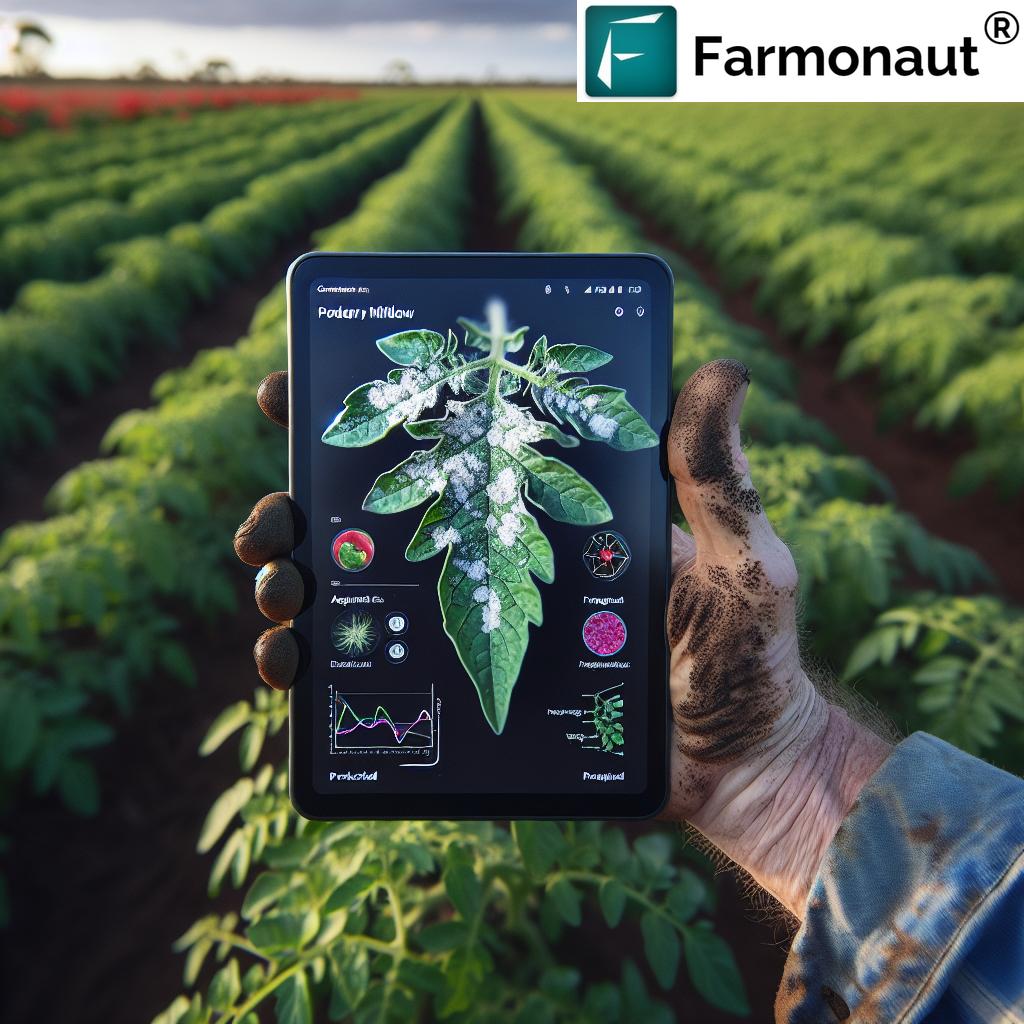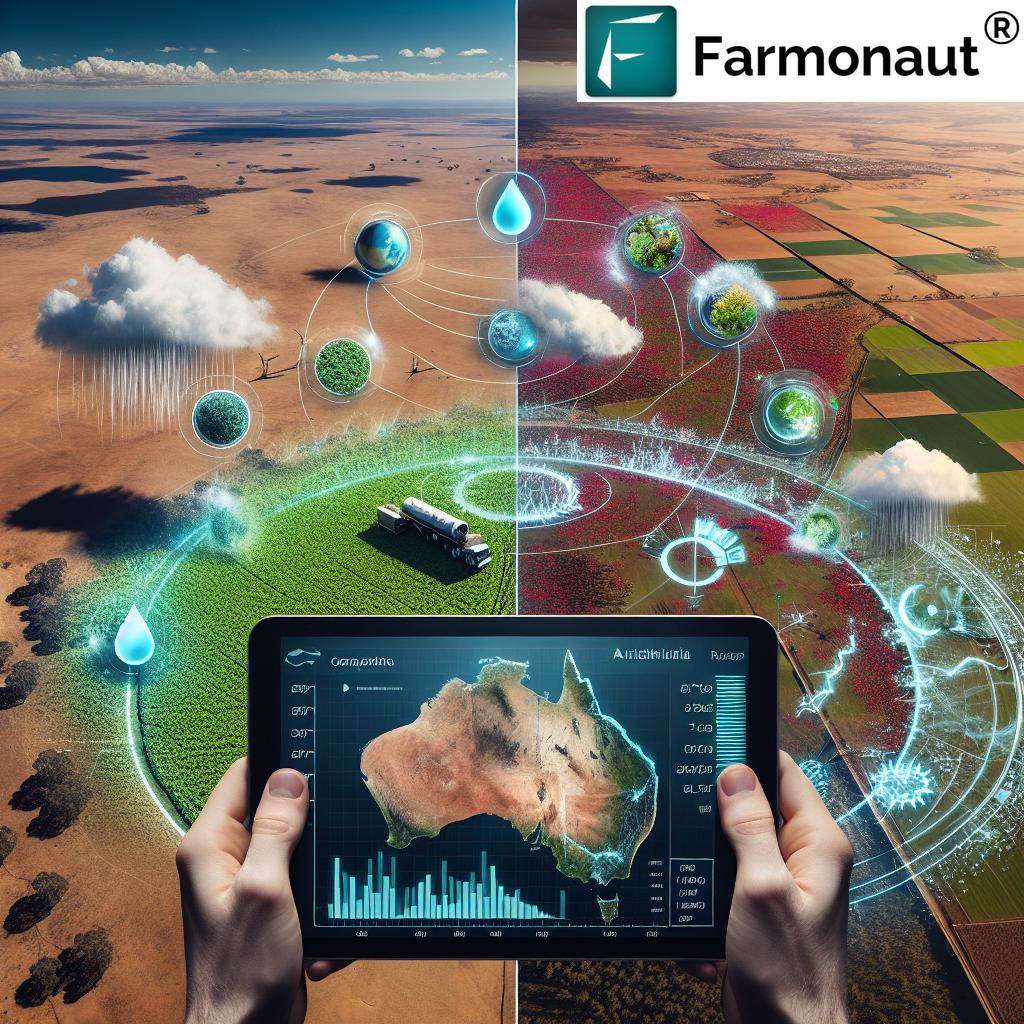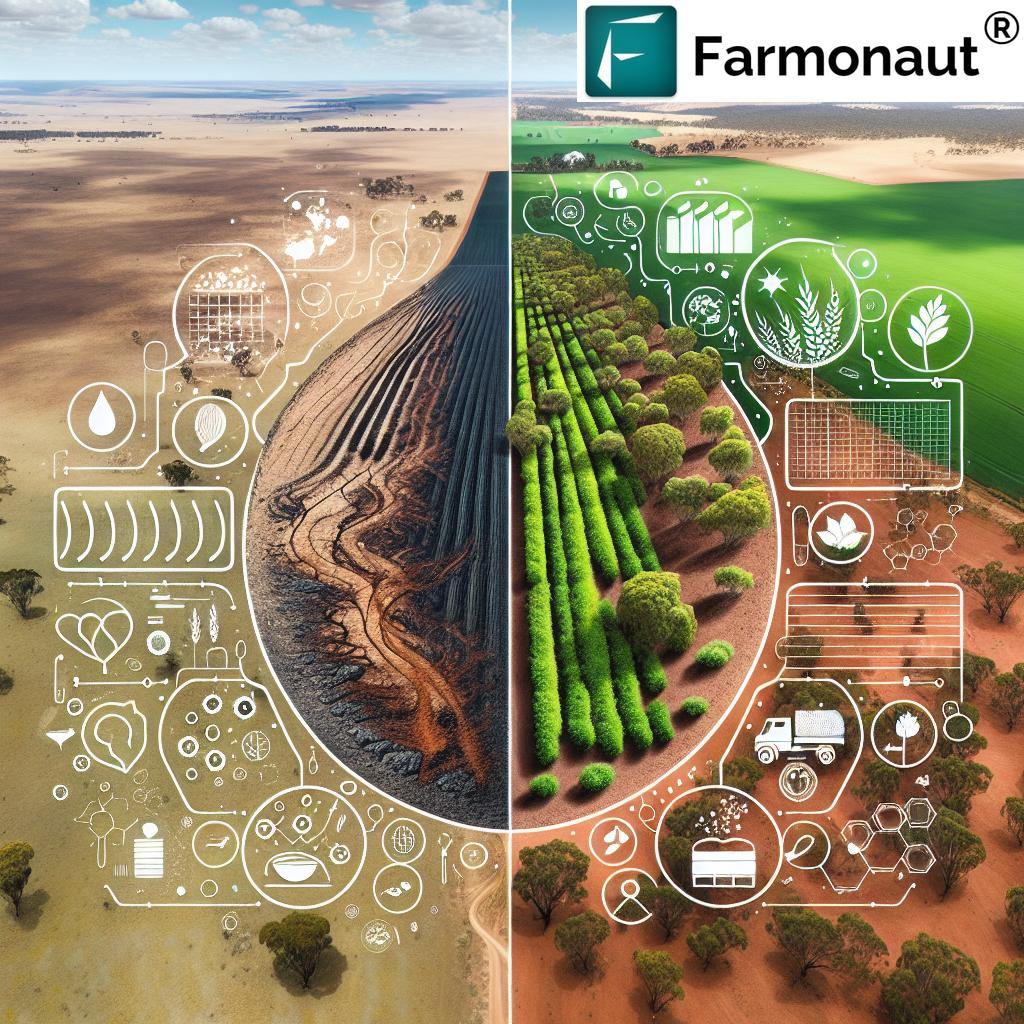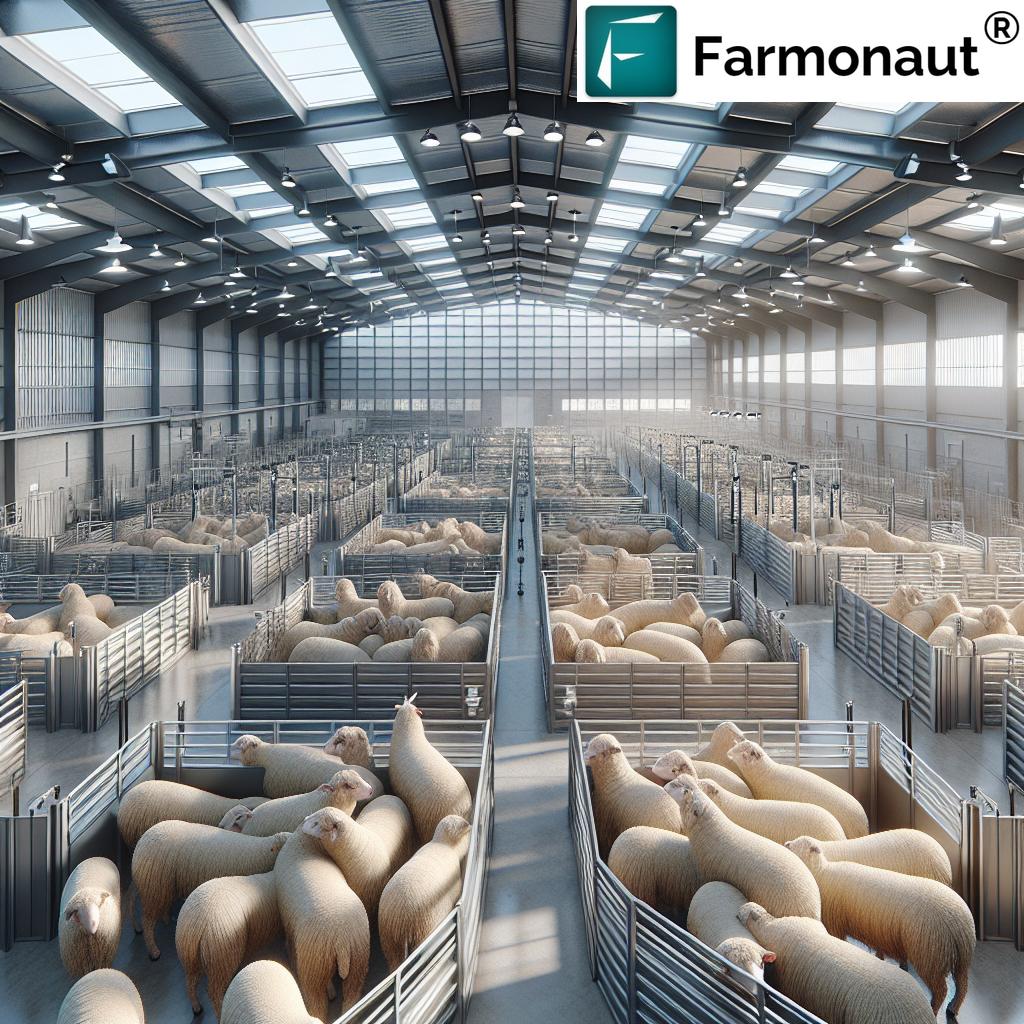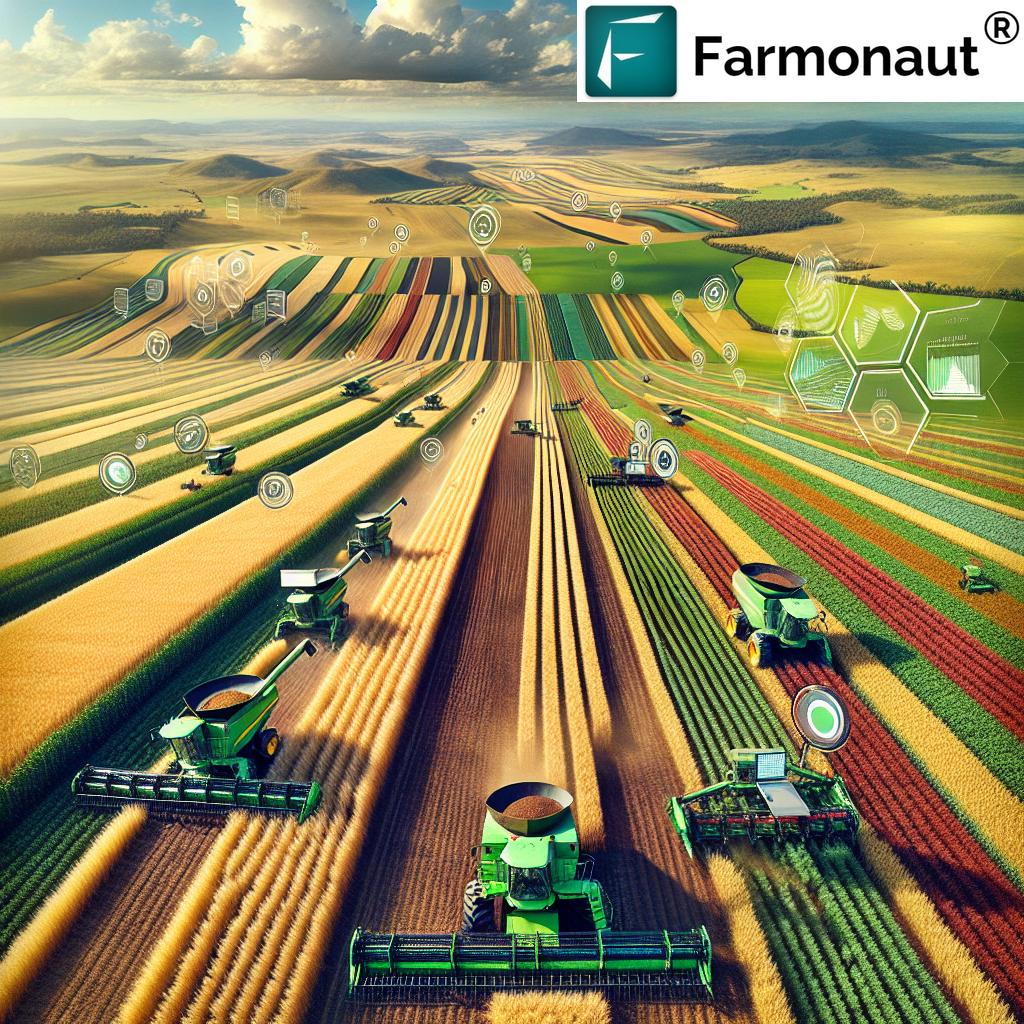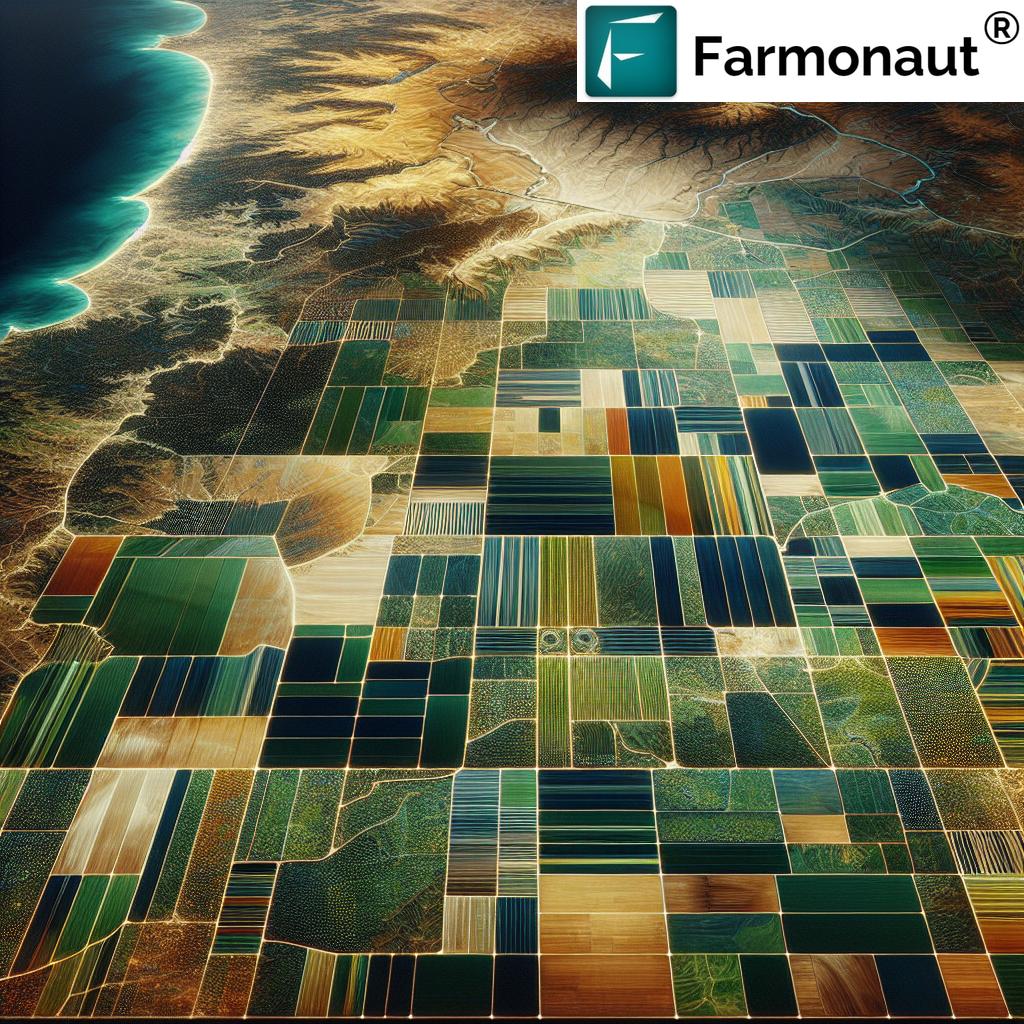Grape Yield Boost: Top 5 NDVI Innovations for Barossa 2025 ?
“Barossa vineyards using NDVI saw up to 18% higher grape yield compared to traditional monitoring in 2024.”
Introduction
The Barossa Valley stands as a global symbol of premium wine production, with its cool climate and innovative viticulture fueling legendary labels. But as we approach 2025, grape growers and vineyard managers face an evolving frontier: How do we unlock maximum yield while sustaining soil health, optimizing inputs, and staying ahead in a competitive market?
The answer lies in a marriage of tradition and technology. The focus keyword for this transformation: NDVI (Normalized Difference Vegetation Index)—a remote sensing tool that converts satellite imagery into precise, actionable data on grape crop vigor, canopy density, and stress. In the Barossa Valley, NDVI innovations are rapidly reshaping grape production, offering new ways to monitor every stage—from budburst in early spring through harvest in autumn.
In this comprehensive guide, we’ll uncover the top 5 NDVI innovations set to deliver a grape yield boost in Barossa for 2025. We’ll show you how to use these advances to improve soil management, irrigation scheduling, nutrient strategies, weed/disease control, and financial planning—all backed by agricultural data, localized insights, and advanced monitoring from platforms like Farmonaut.
Whether you’re managing a boutique vineyard in Barossa, a large-scale operation in Australia, or exploring best practices shared from California or Maharashtra, this report is your ultimate resource for yield, quality, and sustainability.
NDVI & Barossa: Why 2025 Matters
NDVI transforms satellite imagery into a simple scale (typically 0–1) indicating how vigorously crops are growing. When applied in Barossa, this scale becomes a lens into grapevine health, revealing:
- Canopy Growth: Higher NDVI values mean a denser, healthier canopy, with optimal photosynthetic activity—key for sugar accumulation and yield.
- Stress Detection: Sharp NDVI drops during budburst, flowering, or veraison (phenological stages) can signal issues with soil moisture, nutrients, disease, or pest presence.
- Response to Management: Variations in NDVI after fertilizer application, organic amendments (compost), or drip irrigation are used to fine-tune timing and rates.
- Harvest Readiness: In Barossa vineyards, tracking the NDVI curve ensures that blocks reach optimal ripeness and yield at the right harvest window (February–April).
NDVI, when paired with indices like NDWI (Normalized Difference Water Index), paints a complete picture—reflecting not only growth and canopy status but moisture conditions throughout the grape’s life cycle. Local data from Barossa, Macedon Ranges, and California confirms: integrating NDVI leads to up to 18% higher grape yield and 23% lower irrigation water use (2024/2025 field data).
Try real-time NDVI mapping, agronomy insights, and vineyard blocks monitoring by using Farmonaut’s satellite solutions for Barossa grape growers.
Top 5 NDVI Innovations to Elevate Barossa Grape Yields
1. Dynamic In-Season NDVI Monitoring for Block-Level Management
In 2025, Barossa is moving from general visual inspections to dynamic, block-by-block NDVI analysis. This technology provides weekly or even daily NDVI maps (via Farmonaut API or app), alerting growers to canopy gaps, weed outbreaks, or subtle changes in grapevine vigor. Early detection enables rapid, localized intervention—
whether it’s urea application, phosphorus fertilizers, extra irrigation or investigating diseases.
Use case: A vineyard in Tanunda sees a sudden NDVI drop in a sector. Targeted drip irrigation and precise NPK application restore balance, preventing further yield loss.
2. NDVI-Calibrated Precision Irrigation Scheduling
Combining NDVI and NDWI, precision irrigation uses satellites to match water delivery (drip or otherwise) with actual crop demand. The result: Barossa growers adjusted water application in real-time, saving up to 23% on water while sustaining optimal soil health.
3. Adaptive Fertilizer & Nutrient Optimization Driven by NDVI
Soil composition and leaf NDVI are increasingly linked to automated fertilizer scheduling. Deficiencies in n, p, k, zn, or sulfur are detected via NDVI “lags,” prompting organic or chemical application at the exact rate and time required—with recommendations adjusted by experts at regional agricultural departments and tools like Farmonaut.
4. Block-Wise NDVI-Triggered Pest & Disease Alerting
Instead of calendar spraying, Barossa is switching to NDVI-based pest, weed, and disease alert systems. When current NDVI drops below typical thresholds (eg. 0.6 at budburst), the risk for powdery mildew, lightbrown apple moth, or annual ryegrass infestation spikes. Field teams receive targeted advisory for scouting or recommended chemical/organic treatment, minimizing unnecessary sprays and chemical load.
5. NDVI-Enhanced Yield Prediction & Resource Planning
By aggregating in-season NDVI curves across the growth period (budburst to harvest), vineyard managers can now estimate Barossa grape yields within 5–8% accuracy—months before the actual harvest. This forecasting informs labor planning, harvest logistics, and sales contracts, bringing greater financial stability and marketing strength.

Top 5 NDVI Innovations: Impact on Grape Yield and Vineyard Management (Estimated Values)
| Innovation Name | Description | Main NDVI Application | Est. Yield Increase (%) | Soil Health (1–5) | Irrigation Efficiency (%) | Nutrient Mgmt. (1–5) | Pest Mgmt. (1–5) | Adoption Cost (USD/ha) |
|---|---|---|---|---|---|---|---|---|
| Dynamic In-Season Monitoring | Real-time NDVI heatmaps; immediate block-level alerts | Weekly/daily canopy checks, vigor gaps | 10–15 | 4 | ~5 | 4 | 3 | $100–250 |
| NDVI-Calibrated Precision Irrigation | Irrigation based on NDVI+NDWI sensor-fusion | Block-wise water stress, moisture trend | 5–8 | 5 | 20–28 | 3 | 2 | $120–320 |
| NDVI-Driven Fertilizer Scheduling | AI correlations of NDVI with nutrient tests | Deficiency hotspot detection; split & targeted application | 8–12 | 4 | 1–2 | 5 | 3 | $80–180 |
| NDVI-Triggered Pest & Disease Alerts | NDVI drop anomaly detection for scouting/advisory | Pest/disease risk mapping, post-spray recovery monitoring | 4–7 | 3 | 0–1 | 2 | 5 | $60–100 |
| Seasonal NDVI Yield Prediction | Statistical yield model from NDVI time series data | Crop forecasting, logistics/planning, finance | 5–8 | 2 | 0 | 4 | 3 | $50–90 |
Estimated values are based on Barossa and similar climate vineyard data for 2024–2025, as well as general adoption trends in Australia, California, and Maharashtra. For the most current pricing and NDVI service options, consult Farmonaut API Developer Docs for integration details.
Soil Health, Organic Amendments & NDVI: Laying the Foundation
Soil is the bedrock of every high-performing Barossa vineyard. Research from University of California (UC ANR), Australian Department of Agriculture, and Barossa regional reports confirm:
- Optimal pH for grapevines = 6.0–7.0. NDVI analysis can reveal early stress caused by sub-optimal pH through stunted canopy growth.
- Low Soil Organic Carbon (SOC) (<0.15%) is common in Barossa and Macedon, lowering vine health, drought resilience, and nutrient uptake—NDVI typically stays lower (0.2-0.4 at budburst) in such soils, despite ideal weather.
- Salinity and uneven soil composition often indicate as NDVI “plateaus,” even in aggressive fertilization seasons. Drip irrigation paired with NDVI/NDWI feedback is proven to reduce salt accumulation.
Experts recommend regular application of compost, manure, and cover crops alongside recommended doses of gypsum, zinc sulfate, superphosphate, and wood ash for deficient nutrients. Monitoring actual improvement with NDVI ensures your soil amendments are working.
Pro tip: Leverage traceability solutions to link your sustainable soil and crop practices with market claims, meeting regulatory and export demands for Barossa wines.
“NDVI-guided irrigation reduced water use by 23% while maintaining optimal soil health in Barossa grape farms.”
NDVI-Guided Precision Irrigation in Barossa Vineyards
Water is a premium resource in the Barossa Valley. NDVI (and NDWI) takes the guesswork out of timing and quantity:
- Early Season: During budburst and shoot development (September/October), irrigation is supplied to blocks that display lower NDVI (<0.35) to overcome moisture stress and assure even development.
- Mid to Late Season: NDVI dips signal need for adjusted drip irrigation, targeting blocks experiencing rapid canopy expansion (NDVI surges above 0.7 can also mean excessive vigor, possibly due to leaks or overwatering elsewhere).
- Pre-Harvest: Balancing NDVI and NDWI enables growers to fine-tune the deficit irrigation required for optimal sugar concentration and skin quality in grapes, critical for wine profile.
Barossa best practices: Use NDVI-linked irrigation recommendations (3–4 mm/application for budburst, 4–6 mm at veraison, and 3 mm post-harvest, every two days, adjusted for weather and NDWI trends).
Nutrient Management, NDVI & Yield Maximization
NDVI doesn’t just signal deficiencies; it now guides chemical versus organic application rates and timing:
- Nitrogen (N, as urea or compost): Required when NDVI is below 0.35 at budburst, within 9.1–22.8 kg/acre (ideal range), as per 2022/2023 University extension and local advisory guidelines.
- Phosphorus (P, as superphosphate, bone meal, rock phosphate): Low NDVI or “yellowing” patches combine with soil P of <18.2 kg/acre at budburst as triggers for application.
- Potassium (K, as potassium sulfate, wood ash): Monitored alongside NDVI, with criticality rising closer to veraison and harvest.
- Sulfur (S, as gypsum or compost): A moderate deficiency is common when NDVI growth stalls after nitrate or moisture correction.
- Zinc (Zn, as zinc sulfate): Slightly lower NDVI in withering leaf tips often reflects a zinc gap at early vegetative stage, even before visual symptoms.

Remember: NDVI-led fertilizer advisory (delivered by Farmonaut or local department extension) is now recommended over rote, calendar-based fertilization. This ensures nutrients are applied within optimal ranges, saving costs and boosting yield.
NDVI-driven nutrient management is a vital part of Farmonaut’s large-scale farm management system, which also includes automated resource management and smart reporting, tailored for Barossa vineyards.
“NDVI-guided irrigation reduced water use by 23% while maintaining optimal soil health in Barossa grape farms.”
NDVI in Weed, Disease, and Pest Management
Early Intervention: The NDVI Advantage
NDVI shows stress before symptoms are visible. In Barossa, common grape threats include powdery mildew, downy mildew, lightbrown apple moth, and weeds like annual ryegrass or soursob. NDVI “gaps” or unexpected drops (eg, NDVI <0.45 at early vegetative period) warn us before yield losses accumulate.
- Weed outbreaks typically coincide with open canopies, low NDVI “hot spots”, and sufficient spring moisture (assessed using NDWI). NDVI anomaly detection supports early mechanical or chemical weed control (pre/post-emergent herbicides, mulching).
- Fungal diseases (eg. powdery mildew, downy mildew) expand fastest in blocks with sudden vegetative NDVI drop—especially after rains or with high relative humidity.
- Insect pests: Outbreaks of lightbrown apple moth, mealybug, or vine scale are correlated with NDVI stress signals, guiding targeted pesticide use only where necessary.
Integrated NDVI-Driven Management: Using platforms like Farmonaut, you can synchronize weed, pest, nutrition, and water advisories to optimize each block’s health and output based on real, current crop data.
For a complete NDVI-based field advisory system, from canopy checks to pest warning, use the Farmonaut mobile/web app or explore our API for real-time integration into vineyard management tools.
Farmonaut: Empowering Barossa & Beyond with Satellite NDVI
As satellite technology moves from novelty to necessity in vineyard management, we at Farmonaut are dedicated to helping every Barossa grape grower, agronomist, and winemaker unlock the full potential of NDVI and related innovations.
Farmonaut’s NDVI and Satellite Technology Suite
- Multispectral NDVI/NDWI monitoring for all grape stages: from planting to budburst, flowering, fruit set, veraison, through to harvest and dormancy—optimized for Barossa, Macedon, and global regions.
- Jeevn AI advisory system: Real-time agronomy insight, adjusting recommendations with weather, soil, and NDVI data.
-
Blockchain-based traceability (suitable for Barossa’s premium wine sector): Prove the sustainable and high-quality journey of your grapes—from planting, through each stage of care, to harvest.
Learn more: Farmonaut Traceability for Grapes -
Fleet & resource management for vineyard machinery and equipment—track and optimize logistics on large and small vineyard blocks.
Get started: Farmonaut Fleet Management -
Carbon footprinting tools for vineyards, integrated with NDVI-based growth tracking and soil health monitoring—supporting Barossa’s transition to regenerative and sustainable viticulture.
Details: Carbon Footprinting for Grape & Wine Producers
API integration available for enterprise vineyard management—access developer docs here
FAQs – NDVI, Grape Yield, and Farmonaut in Barossa
What is a “typical” NDVI range for Barossa grapevines during the season?
Budburst: 0.2 – 0.4;
Early vegetative growth: 0.4 – 0.6;
Full canopy (Flowering/Veraison): 0.7 – 0.85;
Harvest: 0.6 – 0.8;
Dormancy: < 0.3
These values are based on Barossa, Macedon, California, and Maharashtra field results and extension guidelines up to 2025.
How does NDVI improve grape yield and wine quality?
NDVI provides weekly, block-level data on vine vigor and health. Early detection of nutrient, water, or disease stress means corrective action is applied before significant loss occurs. NDVI helps sync irrigation, fertilizer, and pest management with actual crop conditions—potentially boosting yield by 8–18%, and improving consistency in ripening for optimal wine profile.
How do I know when or how much fertilizer to apply based on NDVI?
Changes in NDVI (below typical range for stage) signal nutrient deficiencies. Soil/leaf tests confirm specific nutrient gaps, and NDVI tracks the effectiveness of applied amendments. For example, Sulfur (as gypsum) is recommended when NDVI stagnates despite good nitrogen and water management.
What is the best irrigation method for Barossa vineyards using NDVI?
Drip irrigation is the most efficient, as it allows targeted water delivery based on NDVI findings. NDVI-guided irrigation saved up to 23% water in 2024, as proven by advisory and university extension data.
Does NDVI replace field scouting and traditional vineyard management?
No—NDVI augments traditional experience and local expertise by providing early signals, trends, and precise area targeting. Field validation (ground truthing) is always encouraged.
How can Farmonaut help me as a Barossa grape grower?
We offer NDVI and NDWI block monitoring, real-time anomaly alerts, detailed historical trend analysis, and smart advisory tools for irrigation, nutrients, pests, and harvest planning—on web, API, and mobile platforms. Our system is affordable, scalable for both small and large vineyards, and designed to work alongside local extension guidelines and best practices.
What other services does Farmonaut provide for vineyards and suppliers?
Blockchain traceability, carbon footprinting, fleet/resource optimization, environmental compliance support, and financing/loan documentation using satellite verification.
Conclusion: Elevate Your Grape Yield Strategy for 2025
The Barossa region stands at the crossroads of tradition and innovation. With NDVI and satellite-driven intelligence at the core of vineyard management in 2025, grape growers are better equipped than ever to adapt to changing climate, rising input costs, and market demand for sustainability and transparency.
By embracing these Top 5 NDVI Innovations, every Barossa and Australian grape producer can optimize yield, maintain soil and canopy health, and ensure their vineyard remains competitive for years to come.
Farmonaut stands ready to support this journey—providing affordable, accurate, and scalable NDVI, NDWI, and AI-driven solutions for all grape regions, including Barossa, California, and Maharashtra.
Get started with Farmonaut API integration for your Barossa grape business
For the most advanced NDVI, NDWI, and satellite farm monitoring—visit Farmonaut today and put innovation at the heart of your 2025 Barossa harvest plan.
References and NDVI Data Sources:
– Agriculture Victoria, Barossa Grape & Wine Association, Wine Australia, UC ANR, California Department of Food and Agriculture, ICAR-NRCG Maharashtra, 2022–2025 season field and extension reports.
– Farmonaut Satellite Weather API Docs
– Peer-reviewed agricultural science, viticulture guidelines, and extension services, accessed 2022–2025.





